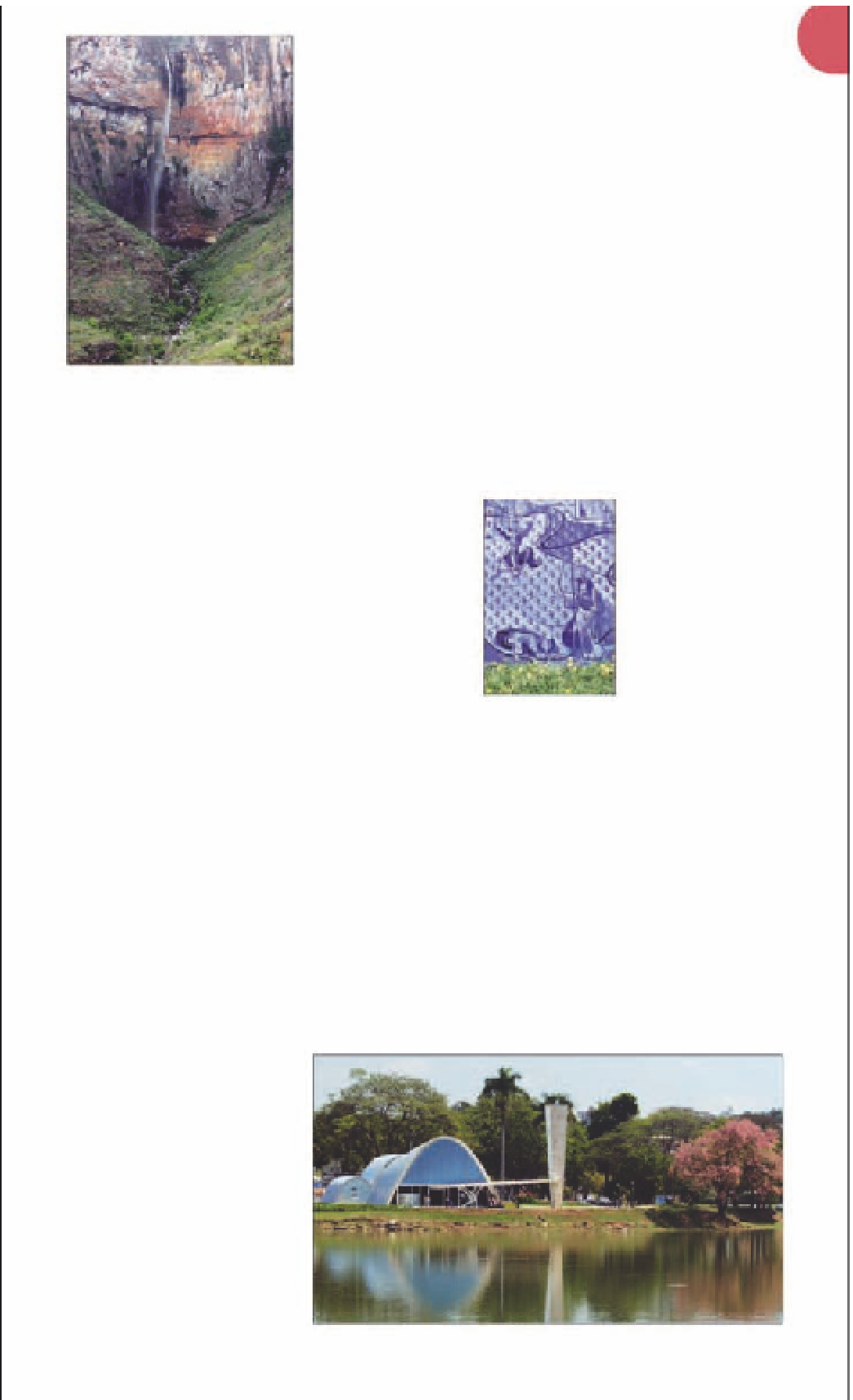Travel Reference
In-Depth Information
Belo Horizonte
3
*
3,000,000.
k
~
@
£
n
Aloturismo (Belotur's hotline),
(031) 3277 9777.
_
Carnaval
(Feb/Mar).
www
.pbh.gov.br
the dance hall
Casa do Baile
,
with its sweeping curved
walkway that functioned as
a ballroom till 1946 and the
twin sports stadia, which
are a clear precursor to
the gymnasium Niemeyer
designed for Brasília.
In the inner city, the
Museu Mineiro
preserves
some fine colonial era
religious art, including a
number of paintings attributed
to Mestre Athayde (1762-
1830). Beyond this, Belo
Horizonte's main attractions
are the lively restaurant and
nightlife scene around the
inner city neighborhoods
of Lourdes and Savassi.
These areas have many chic
restaurants, which often
have live music playing
during the week-
ends
(see p398)
. The
Lourdes and Savassi
neighborhoods are
easily explored on
foot, and make a
pleasant walk.
The capital city of Minas
Gerais was laid out in the
1890s and resembles a mini-
São Paulo. Clusters of
seemingly endless skyscraper
apartment blocks sit in a
broad valley under lush hills.
Belo Horizonte is known
worldwide for its visionary
architecture. Its architectural
highlights lie in the suburb of
Pampulha, often regarded as
the blueprint for Brasília. The
buildings are set in expansive
gardens designed by Roberto
Burle Marx (1909-94), gath-
ered around a large,
beautiful artificial
lake. All were com-
missioned by the
then mayor of Belo
Horizonte, Juscelino
Kubitschek, and
designed by the
renowned architect
Oscar Niemeyer in
the 1940s.
The most
impressive of all
the buildings is the
Igreja de
São
Francisco de Assis
, which was
built in 1943 as a series of
parabolic arches in concrete,
and has a wonderful sense of
light and space. On the
outside walls are a series of
azulejos
, or Portuguese blue
tiles, depicting scenes from
the life of St. Francis and
painted by Brazil's foremost
Modernist artist, Candido
Portinari (1903-62). Other
important buildings in the
Pampulha complex include
Magnificent waterfall at Parque
Nacional Serra do Cipó
Parque Nacional
Serra do Cipó
2
@
from Belo Horizonte to
Jaboticatubas, or Santana do Riacho.
n
Secretária do Turismo, (031) 3718
7017.
Tel
(031) 3718 7129.
#
8am-5pm daily.
Cipó
Veraneio Hotel, Rodovia MG-10,
Serra do Cipó, (031) 3718 7000.
www
.
cipoveraneiohotel.com.br
8
®
Environs
The colonial towns
of Sabará, Caeté,
and Santa Luiza, to
the east of Belo
Horizonte, lie less
than half an hour's
drive away. All preserve fine
Baroque churches and streets
of 18th-century town houses.
Just northeast of Belo
Horizonte, the state capital,
this 131 sq-mile (338 sq-km)
national park lies in high
rugged country in the Serra
do Espinhaço mountains,
which run through the middle
of northern Minas Gerais.
Cipó protects some pristine
areas of
cerrado
as well as
the watersheds of many of
the tributaries of the São
Francisco and the Doce
rivers. Waterfalls, plants,
rare animals, and birds are
abundant, making this one
of the most beautiful national
parks in Minas Gerais.
It is particularly lovely
in May and June when the
skies are invariably blue,
the rivers full, and many of
the numerous wildflowers
in bloom. This is also a
good time to go on a
guided tour, at dawn or
dusk, to spot pumas, giant
anteaters, ocelots, maned
wolves, and howling monkeys
on the quieter trails.
The park is a popular
location for ecotourism -
particularly rock climbing,
with excellent facilities and
accommodation options.
Azulejos
on the
outside walls of São
Francisco de Assis
Igreja de São
Francisco de Assis
Av Otacilio Negrão de Lima
,
Pampulha.
Tel
(031) 3427 1644.
#
R
9am-5pm Mon-Sat,
9am-1pm Sun.
&
7
^
E
Museu Mineiro
Av João Pinheiro 342.
Tel
(031)
3491 2319.
10am-6pm Tue-Fri,
10am-4pm Sat & Sun.
#
&
Igreja de São Francisco de Assis in Pampulha, Belo Horizonte






































